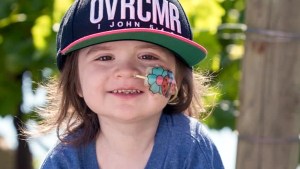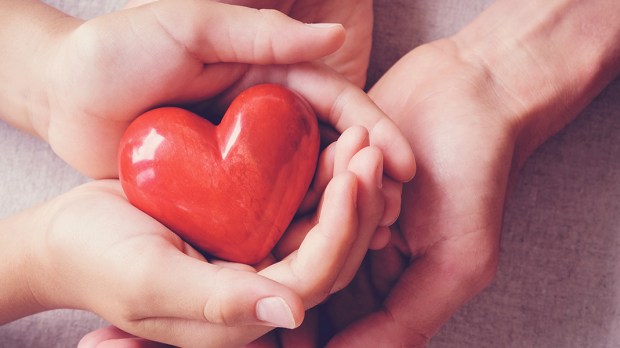Lenten Campaign 2025
This content is free of charge, as are all our articles.
Support us with a donation that is tax-deductible and enable us to continue to reach millions of readers.
Every year in the US, nearly 175,000 people find out they have leukemia or another blood-related cancer. Rates vary around the world, but the numbers are significant wherever you go. For many of these people, the only chance of survival is a transplant of healthy bone marrow, which is responsible for the production of blood in our bodies.
Ideally, bone marrow will come from a family member, but it’s not always possible. In such cases, the search for an unrelated donor begins; what is needed is a person whose tissue compatibility antigens are the same as or similar to the patient’s. The probability of finding someone matching is 1:20,000, and in some cases even 1:1,000,000. It’s like a lottery with life at stake.
He just wanted to help
Paweł Zdunek from Ostróda, Poland, registered as a donor in 2011, right after he found out his friend had leukemia. “It was an impulse,” he remembers today. “I didn’t know anything about the methods of harvesting and procedures. I just wanted to help.”
The phone rang a year later – it turned out that Paweł had a genetic match somewhere out there who needed his help. But then things got quiet for a while. Paweł even thought that someone else was found who was a better match. When he received another call before Christmas, his joy was immense.
“I told my wife that I don’t want any gifts for Christmas, that the knowledge I could save someone’s life is the best gift!” After the New Year, he was invited for testing, and he had a thorough physical. It’s important for the donor and the recipient to be safe during the procedure. Finally, he was told he’d passed the final test.
“I was told that the surgery would take place in three weeks, and that I should take care of myself because my health was very important now. I had already thought about that, and the day I found out that I would be a donor, I quit smoking. I’d tried many times before, but only knowing that someone’s life was depending on my own health was the right motivation. Even today, I still don’t smoke.”
What’s the procedure like?
In 80 percent of cases, the needed cells are harvested from peripheral blood. For a few days prior to the procedure, the donor is given a growth hormone that makes the stem cells travel from the bone marrow into the blood. The actual harvesting looks like a normal blood donation, except both hands are attached to a machine by tubes. The life-giving liquid comes out of one hand, the machine separates and keeps the hematopoietic stem cells, and the rest of the blood returns to the donor via the other hand. The donor spends only a few hours in the hospital.
In another technique, the bone marrow is harvested from the hip bone (harvesting from the spine is a total myth). In this more invasive case, the procedure takes place under anesthesia, so it’s painless for the donor. Doctors decide on the method of harvesting depending on the needs of the recipient.
In Paweł’s case, the second method was used. “I was transported to the operating room. I got a shot and fell asleep; when I woke up, it was all over. Then I found out the procedure took 45 minutes. I went home the following day, and a few days later I played soccer with my son. Pain? Practically none. The discomfort is minimal, and when you weigh your minor discomfort against someone’s life, there really isn’t any reason to think twice.”
He saved the girl’s life
After the procedure, Paweł found out that his bone marrow went to a little girl in Poland. One hundred days later, exactly on his birthday, he received a special gift: the information that his bone marrow hadn’t been rejected. Two years later, a meeting was arranged. He could finally meet his new little “sister.”
“Amelka was diagnosed with leukemia when she was two years old,” remembers her dad, Robert. “It seemed the chemotherapy was working, that she was getting better, but then they realized that a bone marrow transplant was necessary — that my daughter needed a medicine that cannot be bought. We had to count on a gift from a stranger. Thankfully, there was the right person in the database.”
Today Amelka is eight years old, and just started second grade. Following the transplant, she spent another year in the hospital, but today the illness is only a distant memory. She is alive thanks to her hero, although Paweł doesn’t like that word. He doesn’t think he did anything special. And yet, his life was changed too.
“I have new energy in my life. My colleagues at work noticed that I’m more joyful and enthusiastic. I even started college, although I’m certainly not college-age any more. I want to make a change in my life.” Would he agree to repeat the entire procedure if the phone rang with another call from the Foundation? “Of course, I wouldn’t hesitate a moment. There is nothing more beautiful than knowing you can save someone’s life!”
You can save a life, too
If you want to be a hero and save someone’s life, and you are between the ages of 18 and 60 and in general good health, you can register with an authorized national marrow donor program. For more details and for a list of organizations offering this service, you can visit the Bone Marrow Foundation.
You can register at only one center. Registering in multiple centers only creates havoc in the system, because the entire world database is searched for a match for a patient in need. Then, all you have to do is wait for a call with a message that somewhere out there is your genetic match!

Read more:
This 5-year-old singing in the hospital will brighten your day (Video)

